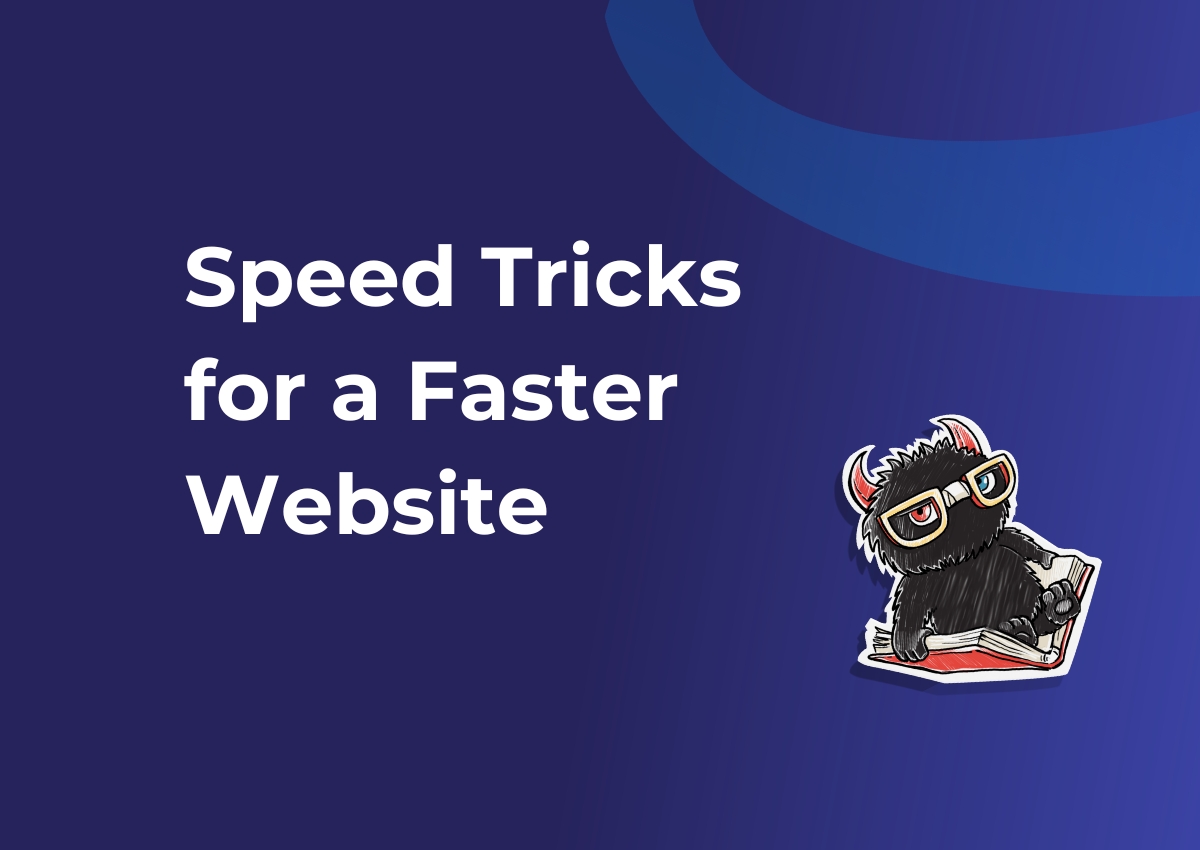 https://www.omahamediagroup.com/images/uploads/monster_gallery/Omaha-Media-Group-Black.jpg
nora
https://www.omahamediagroup.com/images/uploads/monster_gallery/Omaha-Media-Group-Black.jpg
nora
Speed Tricks for a Faster Website

A fast website is essential for keeping visitors happy and engaged. Slow-loading pages can frustrate users and drive them away, potentially costing you loyal customers and revenue. Luckily, there are simple tricks you can use to boost your website's speed.
Optimizing your site means making small changes that deliver big results. From compressing images to choosing the right hosting, every tweak can shave seconds off your load time. The faster your site, the better experience you offer your users, encouraging them to stick around and explore more.
By focusing on these speed tricks, you not only improve your website’s performance but also help your business stand out. A quick and responsive site is a mark of professionalism and efficiency, attributes that visitors will appreciate and remember. Dive into these speedy solutions and watch your website’s performance soar.
Optimizing Images for Speed
Images play a big role in web design, but they can also slow down your site if not optimized properly. Compressing images without losing quality is the first step. Tools and applications can help reduce the file size while keeping the image clear. Smaller files load faster, making your site speedier for users.
Choosing the right image format matters too. JPEGs are great for photos because they balance quality and size well. PNGs work best for images that need transparency. SVGs are ideal for logos and graphics since they can scale without losing clarity. Picking the right format helps your site load quicker.
Implementing lazy loading for images is another smart move. Lazy loading means images load only as they come into view on the user’s screen. This reduces the initial load time, so visitors can start interacting with your content while other elements load in the background. By focusing on image optimization, you can ensure a faster, smoother experience for your users.
Enhancing Web Hosting and Server Performance
Web hosting and server performance are crucial for a fast website. First, choose a reliable and fast hosting provider. Your provider affects how quickly your site loads, so opting for one known for speed and reliability can make a difference.
Enabling caching is another effective way to boost performance. Caching stores copies of your site's pages so they don’t have to be rebuilt each time a user visits. This reduces server load and speeds up page delivery. Implement caching through your hosting settings or use plugins to manage it.
Utilizing a Content Delivery Network (CDN) can further enhance speed. A CDN stores copies of your site on multiple servers around the world. When someone visits your site, the CDN delivers it from the server closest to them. This minimizes distance and loading time, ensuring swift access. Together, these strategies help ensure that your site remains responsive and efficient.
Streamlining Code and Scripts
Streamlining your website's code and scripts improves loading speed significantly. Start by minifying HTML, CSS, and JavaScript files. Minifying involves removing unnecessary characters like spaces and comments to make the files smaller. Smaller files mean faster load times, offering a smoother experience for visitors.
Next, remove unused plugins and scripts. Old or inactive plugins can clutter your site, slowing it down. Regularly audit your plugins and get rid of those that no longer serve a purpose or are rarely used. Keeping your site clean and efficient ensures optimal performance.
Asynchronously loading JavaScript is another way to enhance speed. When JavaScript loads synchronously, it can block other elements from loading. By loading it asynchronously, it allows other parts of the page to load simultaneously, reducing the delay users experience. Implement these strategies to maintain a fast and responsive website for your audience.
Leveraging Browser Caching and Compression
Leveraging browser caching means storing certain files on your visitor’s computer, so they don’t have to be downloaded anew on each visit. Set up browser caching to make repeat visits faster and more efficient, as stored data loads quicker.
Enable GZIP compression on your web server. GZIP compresses files so they take up less space, making pages load faster for users. Smaller files are easier and quicker to send over the internet, resulting in a more responsive browsing experience.
Regularly analyze and test website speed improvements to ensure your changes create the desired effects. Use tools that simulate different user environments and devices, tracking load times to see where further improvements are needed. Consistent testing keeps your site at peak performance.
Conclusion
Efficient websites don’t happen by chance; they require strategic adjustments and constant updates. Ignoring delayed load times risks losing visitors before they even see your content. By optimizing images, improving hosting, cleaning up code, and leveraging caching and compression, you put user experience first.
Speed is crucial in retaining visitors and keeping them engaged, which makes having a robust web strategy essential. If you’re aiming to take your site’s performance to the next level, Monstrous Media Group LLC can help. From optimizing your content to managing technical details for speed, our team specializes in website development that boosts your digital impact. Contact us to see how we can create a targeted plan to enhance your site’s agility and user satisfaction.
Hire the team to help you with your website, app, or other marketing needs.
We have a team of digital marketers who can help plan and bring to life all your digital marketing strategies. They can help with social media marketing, email marketing, and digital advertising!
CONTACT US

Comments